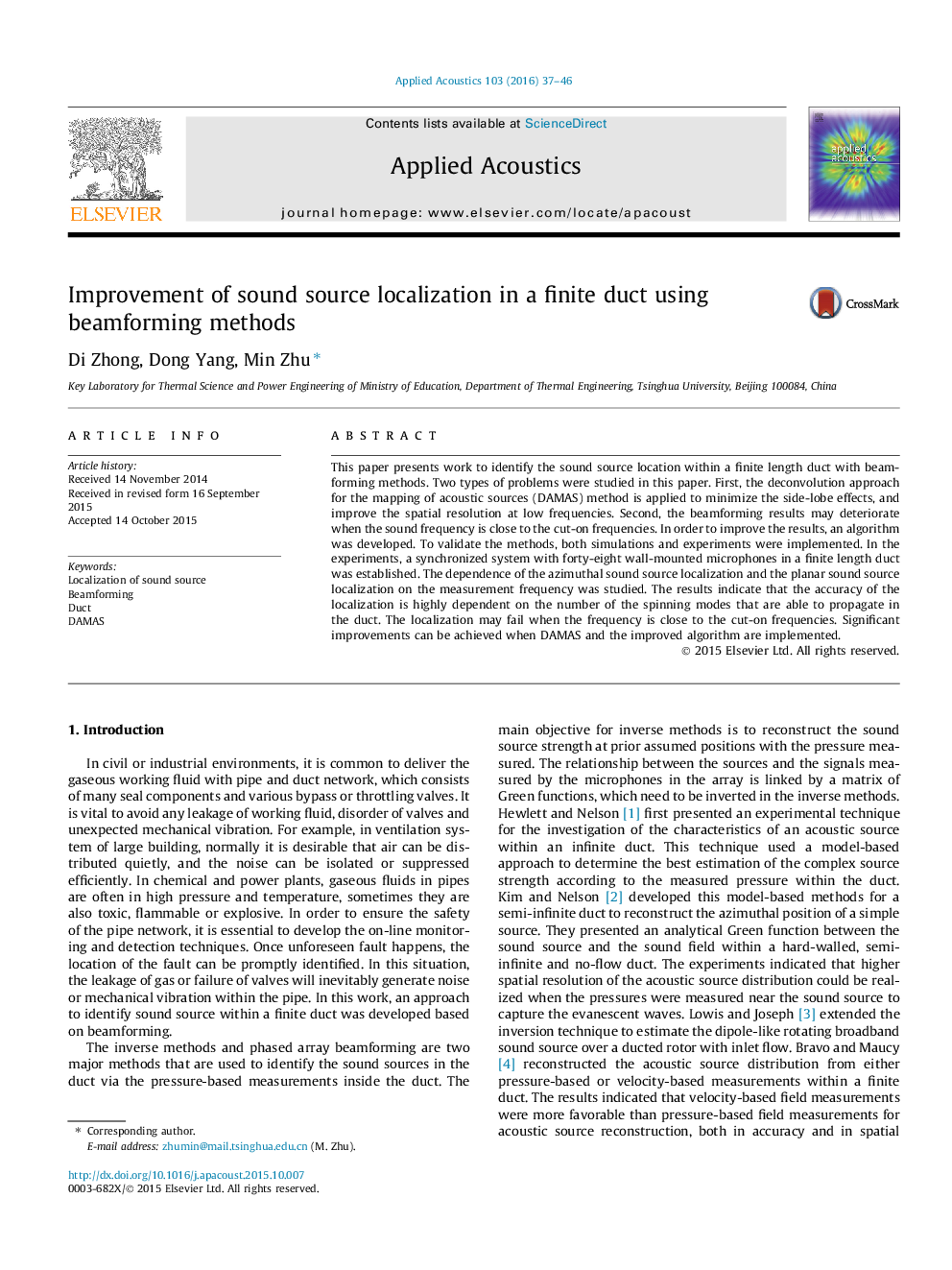| Article ID | Journal | Published Year | Pages | File Type |
|---|---|---|---|---|
| 760858 | Applied Acoustics | 2016 | 10 Pages |
Abstract
This paper presents work to identify the sound source location within a finite length duct with beamforming methods. Two types of problems were studied in this paper. First, the deconvolution approach for the mapping of acoustic sources (DAMAS) method is applied to minimize the side-lobe effects, and improve the spatial resolution at low frequencies. Second, the beamforming results may deteriorate when the sound frequency is close to the cut-on frequencies. In order to improve the results, an algorithm was developed. To validate the methods, both simulations and experiments were implemented. In the experiments, a synchronized system with forty-eight wall-mounted microphones in a finite length duct was established. The dependence of the azimuthal sound source localization and the planar sound source localization on the measurement frequency was studied. The results indicate that the accuracy of the localization is highly dependent on the number of the spinning modes that are able to propagate in the duct. The localization may fail when the frequency is close to the cut-on frequencies. Significant improvements can be achieved when DAMAS and the improved algorithm are implemented.
Keywords
Related Topics
Physical Sciences and Engineering
Engineering
Mechanical Engineering
Authors
Di Zhong, Dong Yang, Min Zhu,
